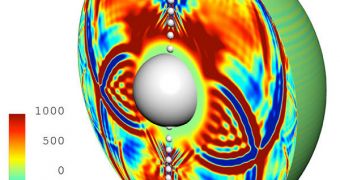Dark matter is the enigmatic force in the Universe that gives galaxies much of their mass, interacting with normal matter only through gravity. Recently, experts proposed a new way of actually detecting it, applying a technique that could finally reveal the most intricate workings of the Universe.
Though dark matter was first proposed decades ago, astrophysicists have yet to detect any clear sign that it actually exists. Massive, expensive detectors built deep underground have detected only tell-tale signs that the stuff is real, but never any dark matter particle.
Through the work of a team of astronomers featuring experts from the Princeton University and the New York University, experts involved in the hunt for the elusive form of matter might soon have a new avenue of research at their disposal.
According to theory, the properties of a primordial black hole – generated at the Big Bang – are very much similar to those of dark matter. Therefore, the team proposes, analyzing the interactions between such objects and regular stars could reveal more on the hidden nature of this form of matter.
Details of the proposed research method were published in this month's issue of the esteemed scientific journal Physical Review Letters. The group behind the proposal says that the new technique could at long last provide the necessary direct observations of dark matter.
Some even believe that primordial black holes are the source of dark matter. If that is the case, then verifying the assumption is inevitable. Given that there are about 100 billion stars in the Milky Way alone, an encounter with such a dark behemoth is extremely likely to happen within our lifetimes.
The investigation was conducted by Princeton Department of Geosciences PhD researcher Shravan Hanasoge and NYU Center for Cosmology and Particle Physics PhD researcher Michael Kesden. Together, they set up a model to simulate the passing of a primordial black hole through a star.
“If astronomers were just looking at the sun, the chances of observing a primordial black hole are not likely, but people are now looking at thousands of stars,” Hanasoge explains.
“There's a larger question of what constitutes dark matter, and if a primordial black hole were found it would fit all the parameters – they have mass and force so they directly influence other objects in the Universe, and they don't interact with light,” he adds.
“Identifying one would have profound implications for our understanding of the early universe and dark matter,” the investigator concludes.

 14 DAY TRIAL //
14 DAY TRIAL //